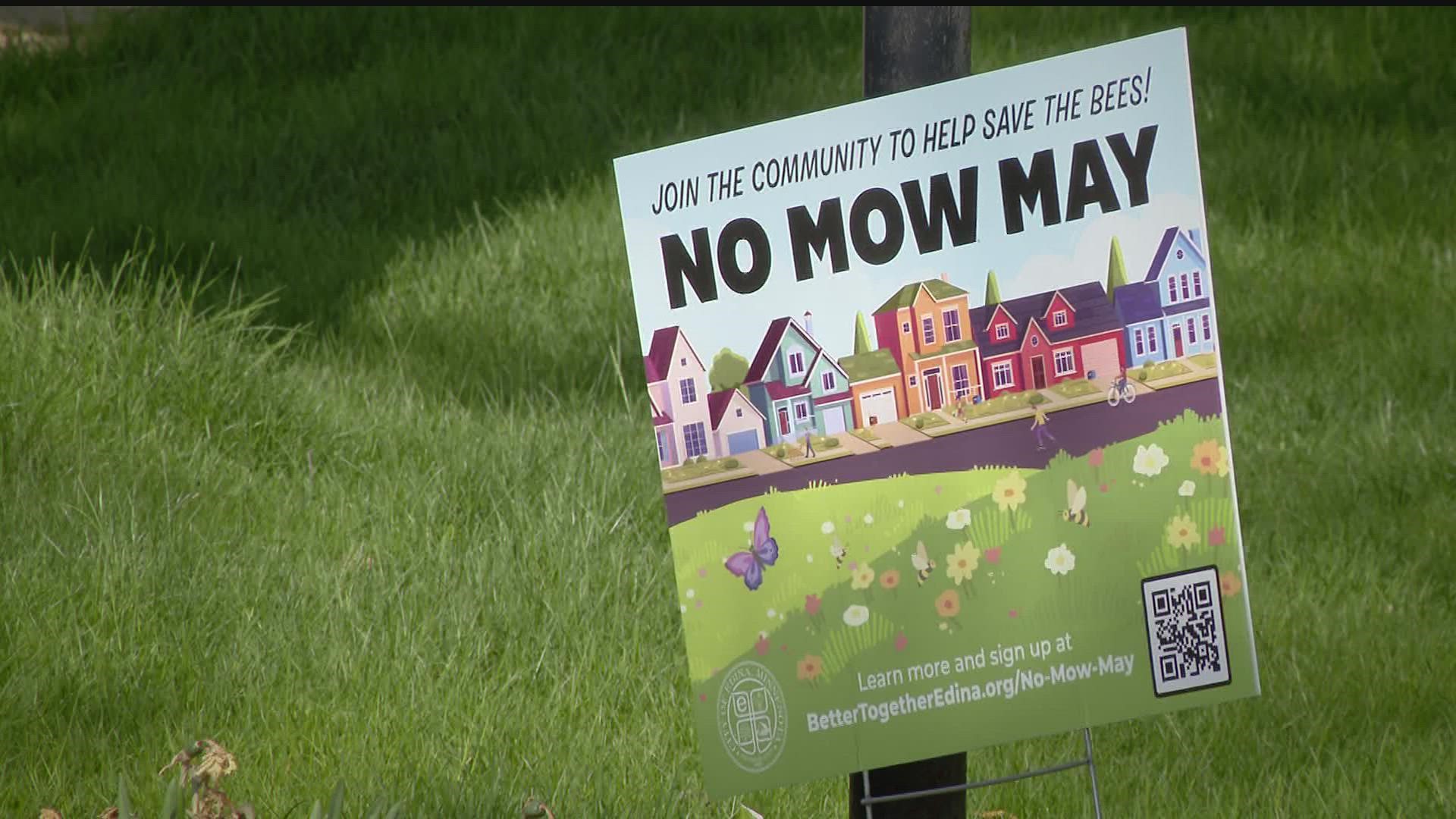MINNEAPOLIS — You've probably heard of "No-Shave November." Maybe you participated in "Dry January." But what about "No Mow May?"
May's campaign du jour encourages home and business owners, basically anyone with a yard, to not mow their lawns throughout the month to protect pollinator habitats.
So if the yard next door has looked a bit unruly lately, your neighbors might have a good reason.
The City of Edina went all-in on No Mow May this year, going so far as to pass a resolution in March that temporarily suspended Turf and Weed ordinances related to lawn height for participating properties. Free yard signs for people taking part in No Mow May were quickly snapped up.


So what exactly are the perks of letting grass grow extra long this month?
According to KARE 11 Meteorologist Laura Betker, the purpose of No Mow May is to allow blooming flowers and so-called "weeds" to blossom in your yard. The blooms provide early season food for pollinations – food that is much more scarce than it is mid-summer.
Betker says if your lawn is a monoculture of grass and treated for weeds, then No Mow May probably isn't for you. The point is to let weeds bloom; it's not about having long grass.
So if yard treatments are killing your weeds, then you likely don't have any blossoms for pollinators to feed on.
When No Mow May is over and you're ready to groom your yard, Betker says your first mow should be as high as your lawnmower will go. Then a few days later, mow again at the next lowest setting until you get to your preferred grass height.
Another pro tip: Consistently mowing to 4 inches is best for a lush lawn that shades out unwanted weeds and keeps moisture locked in.
Watch more WeatherMinds:
Watch the latest deep-dives and explainers on weather and science in our YouTube playlist:

